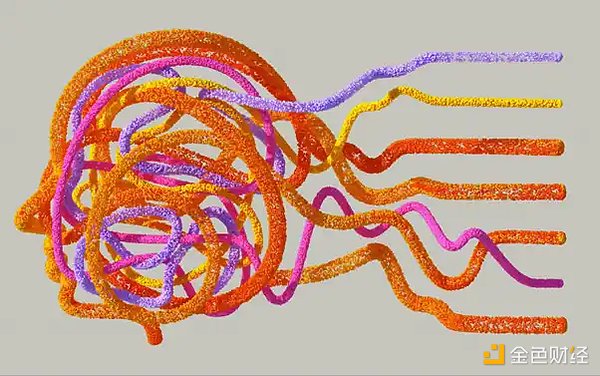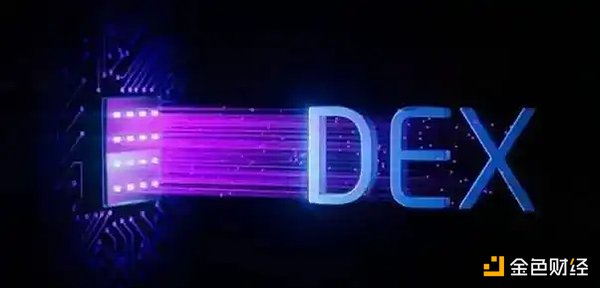Author: Zeke, YBB Capital ResearchForeword
Starting with the inscription craze and ending with the first crypto president's victory, 2024 is about to come to an end. This year, Crypto has experienced an extremely unusual "bull market", with weak performance of cottages, and the voice of Meme is supreme. In the end, all rivers and streams finally return to BTC. In general, although there are some lows and reluctance, Crypto is indeed moving in a more positive direction. In the coming 2025, we also have many directions worth paying attention to. In this article, we will make a brief outlook for next year based on recent views.
1. About AI
At the current stage, chain abstraction projects often pursue conceptual perfection too much, resulting in the technical implementation process becoming extremely complicated, which ultimately affects the user's interactive experience. The implementation of projects that include the Intent architecture is relatively complex. Regardless of whether they are based on centralized (such as TG Bot), structured (combination of on-chain and off-chain preprocessing), or distributed (such as Solver + Executor and other architectures), these intent projects often have some common problems. For example, users still need to have a considerable understanding of DeFi, and the expression of intent must be clear, accurate and simple. For the complex and vague intentions proposed by users, the current intent projects are powerless and the scope of implementation is quite limited. Therefore, from the mid-2023 when Paradigm proposed this concept to today, the so-called intent-centric projects have always been thundering but little rain, and have not been very helpful in guiding new users and lowering the threshold for user operations. However, we all know that from the development path of Ethereum's second layer, the market demand for both is still imminent.

Let's review the development of Layer2 in the past few months. Among the top projects, the second-layer alliance represented by OP Superchain has been growing stronger. Zksync's Elastic Chain and Arbitrum Orbit will eventually form their own alliance along this path. In the future, these alliances will be able to achieve direct internal interoperability through solutions such as interoperable clusters to alleviate the current problems of excessive fragmentation and lack of interoperability in the Ethereum second-layer ecosystem. The competition among dozens of chains will also be narrowed to competition among multiple forces. But from a broader perspective, as the encryption market continues to improve, new-structured Layer2 projects such as Movement and Fuel are also competing to launch their own mainnets in order to obtain scarce liquidity in the cottage market. For projects below the first tier, fragmentation and lack of interoperability are still intensifying. Virtual machines based on different architecture designs may even have wallet plug-ins that are not interoperable. Not to mention letting new users in, the entire second-layer ecosystem is extremely complicated for ordinary blockchain users, and the development of non-financial application chains will also be greatly hindered under this circumstance.
If Ethereum wants to introduce new users, ecological alignment is the biggest prerequisite. An ecosystem that requires users to be half geeks to get started will never usher in "Mass Adoption". From the performance of Solana and Ton in this year's counter-trend development, we can see that the strategy of lowering user barriers and providing a consistent and more Web2-friendly user experience has obviously played an important role in ecological growth. To put it more directly, what these two ecosystems have done in addition to publicity is only to reduce the difficulty of asset issuance, and the use of the chain is more insensitive. Therefore, for Ethereum, a comprehensive solution that prioritizes experience is necessary, but given the consistent open attitude of Ethereum core developers, it is naturally impossible to align the entire second-layer ecosystem by force.
I think the only solution that can solve this problem first is AI browser agent. In the early days when ChatGPT came out, many people had imagined that AI would revolutionize the interaction of APPs from point to point, and could operate across multiple APPs to form a comprehensive super APP. Taking tourism as an example, after receiving the user's travel needs, AI can automatically complete comprehensive planning such as booking tickets, customizing travel routes, arranging meals and time according to the user's complaints. If this AI also has long-term memory capabilities, it can also arrange a more suitable plan for the user based on this memory.
Now, Google is about to launch Gemini-powered AI browser agent, Project Mariner. In the example shown by Jaclyn Konzelmann, director of Google Labs, after the Chrome browser installs the AI agent extension, a chat window will pop up on the right side of the browser. Users can instruct the agent to perform tasks such as "create a shopping cart from the grocery store based on this list." Next, the AI agent will automatically navigate to a grocery platform and add the product to the shopping cart to enter the checkout interface. After confirming that it is correct, the user will check out by himself (the agent does not have payment authority). A similar product, OpenAI, will also be launched next month.
It is worth mentioning that although Google's Project Mariner is currently only available to selected testers, I have already experienced similar agents developed by some projects in Crypto for ordinary users. From a few hours of trial, the current accuracy of the agent for complex and ambiguous intentions can reach 60% to 70% (the cursor operation speed is relatively slow), and it can complete operations such as token transactions in Dex within various public chains and even cross-asset operations from Ethereum to the second layer. All I need to do in this process is to inform it of the intention and enter the wallet password.
Of course, this base still needs to call the API of the centralized model, so what is the collision that Crypto can have with it? I think that in addition to being a better experience intention solution, AI browser agents will also promote the emergence of AI wallets, decentralized computing power, and decentralized data projects next year.
Think about a simple question. In the past few years of rapid development of AI, why has it not been realized until today such a beautiful concept as Agent? In fact, looking back at the development process of OpenAI, it is not difficult to find that the development of pure language models is always faster than the development of models such as image generation. This is because the Internet itself is a huge corpus that can provide inexhaustible text materials for training. What limits the development of language models is more computing power and energy. Agents require a lot of manual labeling and feedback, and the reasoning process is expensive. Crypto naturally has the ability to obtain labor through incentives. In this economic system, upper-level users can obtain Tokens by providing a large amount of labeled data and feedback in a decentralized manner. The bottom layer can also integrate decentralized computing power and data projects. After training is completed, it can also be integrated with wallets and DeFi projects through SDK to realize a true AI wallet, and finally form a closed loop. Ideas about other AI agents can also be derived from this, because any AI agent suitable for Web3 will need computing power, labeling, and feedback to "grow".
2. Stablecoins
Stablecoins are always a battleground and a high-threshold track in Crypto. As for its application value, it has been widely recognized even outside the industry. For example, this year, several giants in the traditional financial field have also entered the stablecoin market, including PYUSD launched by PayPal, USDb in cooperation with BlackRock and Ethena, and AUSD launched by VanEck (serving Argentina, Southeast Asia and other regions).

As Tether and Circle continue to dominate this track, new entrants from stablecoin issuers are gradually divided into two categories. First, issuers of legal stablecoins are beginning to turn their attention to emerging markets and specific application scenarios, mainly in South America, while algorithmic stablecoins are currently generally turning to stablecoins with low-risk financial products as underlying assets, such as Ethena and Usual mentioned in our previous article. From the trend point of view, there will be more Delta neutral stablecoins to compete for short liquidity in Cex next year, and hedging assets will gradually expand from BTC and ETH to public chain tokens with higher risks and lower liquidity to compete for the remaining sinking market. As for the Usual stablecoins with short- and medium-term U.S. Treasury bonds as the underlying assets, I think they are more innovative in terms of protocol tokens and income methods. There is no better choice than short- and medium-term Treasury bonds in terms of RWA asset types. However, compared with the limited liquidity in Cex, the competition for such stablecoins will be smaller and the upper limit will be larger.
In general, the development of stablecoins is gradually moving towards the pursuit of more stable underlying assets and decentralization in governance. However, I hope that some completely decentralized and non-overweight stablecoin protocols will appear next year.
Third, payment
With the compliance and accelerated adoption of stablecoins in various countries, the payment track downstream of stablecoins will also become a new focus of competition. Heterogeneous public chains with high TPS and low Gas, such as Solana and Move, will become the main infrastructure for payment applications. Traditional payment is currently an extremely mature and involuted red ocean market. What changes can blockchain provide? First, there are two relatively simple and often mentioned points. One is to optimize cross-border payments, eliminate pre-financing requirements, make cross-border remittances faster, cheaper and easier, and solve the trillions of dollars of prepaid funds problem in the traditional system. The second is to serve emerging markets. I have also mentioned this in previous articles. In Asia, Africa and Latin America, the application value of stablecoins has been reflected. The strong financial inclusion enables residents of third world countries to effectively cope with the high currency inflation caused by government instability. Through stablecoins, they can also participate in some global financial activities and subscribe to the world's most cutting-edge virtual service subscriptions.

The concept of "PayFi" proposed by Lily Liu, manager of the Solana Foundation, at the 7th EthCC Conference provides more imagination for blockchain combined with payment. This concept involves two cores. The first is timely settlement, that is, T+0 settlement. PayFi can achieve same-day settlement, or even multiple settlements per day. The delays and complexities of the traditional financial system that should have been involved in the whole process will be eliminated, greatly improving the speed of capital circulation. The second is buy now, pay never (BNPL), which is "Buy Now, Pay Never". For example, a user deposits $50 into a lending product to buy a cup of coffee worth $5. Once the accumulated interest reaches $5, the interest will be used to pay for the coffee, and the funds will be unlocked and returned to the user's account. There are many ideas that can be extended from this. For example, the financing needs of emerging projects in the use scenario can be formed more securely and transparently in and out of the blockchain through PayFi, currency exchange in travel no longer needs to rely on various physical financial institutions, and payment and collection time can be freely controlled (delayed collection to obtain interest, early payment to obtain discounts). The income methods will also be more diversified. In addition to the above-mentioned deposit of stablecoins into lending products to obtain interest, I personally think that the types of stablecoins should also be allowed to be converted at will. In the future, with the emergence of emerging stablecoins, users can choose the most suitable type of stablecoin at any time according to their personal risk-bearing capacity, so that they can obtain stablecoin protocol tokens and higher stablecoin interest at the same time. For DeFi, if this payment system can become mainstream, its growth space will be unimaginably huge.
Fourth, Dex
We have already mentioned the fragmentation and lack of interoperability of Layer2 in the first section. In fact, there is another problem with this development path, that is, there is an excess of block space, and the development of Infra is far better than the development of Dapp. This problem will cause a large number of long-tail chains to be naturally eliminated within a few years, which is also a very headache for Ethereum, which has not received positive feedback from Layer2 due to the DA pricing error.
Looking back at this round of counter-trend growth of public chains, they basically rely on their own strong community, ecology, and publicity advantages, and supply these advantages to the asset issuance platform to achieve the rapid growth of the overall TVL. Therefore, not every Layer2 can replicate this eyeball economy, and the lack of super applications is still a realistic problem to be faced next year. Going with the wind, in addition to what we mentioned above, the related needs of AI Agent in the future may be a way out. In the short term, the trends that are also obvious include on-chain order book Dex, privacy, payment-related stacks, and decision-making tools.

I am personally optimistic that on-chain order book Dex will become the mainstream of the next generation of Dex. After all, from the development of AMM, the complexity of its technical path is constantly doubling, but the efficiency is becoming more and more limited, which we have also mentioned in the article related to Uni. However, for the second layer, the limitations of performance and Gas are still very obvious, and the improvement of matching algorithms and the innovation of Gas solutions will become key challenges.
V. Asset issuance is still the main theme
From 23 years to today, that is, from the inscription to the current AI Meme platform, providing asset issuance has been a hot topic in the past year. If this time span is extended a little, in fact, from the ICO era to the present, asset issuance can be regarded as the only main theme of the currency circle. It's just that the external package and the threshold of issuance are changing. From a positive perspective, the gaming needs of users have promoted the advanced development of Infra and DeFi. As this technology is known and recognized by the world, blockchain has been able to enter the mainstream and integrate into reality. From a bad perspective, this game has become more pure and absurd, and the reduction in the difficulty of asset issuance also means that this dark forest is more dangerous. Now, just a few words and a picture are added, and a grand zero-sum game begins. Why don't we lead it back to a more positive side? Promote the progress of the industry in the game.
For example, some AI Memes are now turning to practical Agent development, rather than the early versions of AI Agents that talk nonsense. The recently popular DeSci can also be called the "scientific research version of ICO". Although the current core is driven by Meme, in the long run, DeSci combined with the various advantages of blockchain can make traditional scientific research more transparent, easy to spread, easy to finance, and easy to communicate. However, whether it can be implemented in the end and how it will evolve still need to be questioned.
In fact, similar ideas to DeSci have also been mentioned in my article about GameFi, such as the shortage of funds and personnel for independent games, and how to effectively promote the development of independent games through blockchain. The problem with blockchain financing is that the threshold for asset issuance is too low, the restrictions are too few, and the fundraising ability is too strong (it can also be said that it is because the entry threshold on the chain is extremely low). How to limit the use of funds through rules and force project parties to continuously create truly valuable things is also the focus of our thinking.
Allowing gamers to play and builders to move forward is the premise for the continuous development of blockchain. We may see more versions of "ICO" next year, but I hope that the next "DeFi Summer" can be promoted in this game feast.
 Alex
Alex
 Alex
Alex Kikyo
Kikyo Miyuki
Miyuki Anais
Anais Weiliang
Weiliang Catherine
Catherine Weatherly
Weatherly Kikyo
Kikyo Weiliang
Weiliang Weatherly
Weatherly